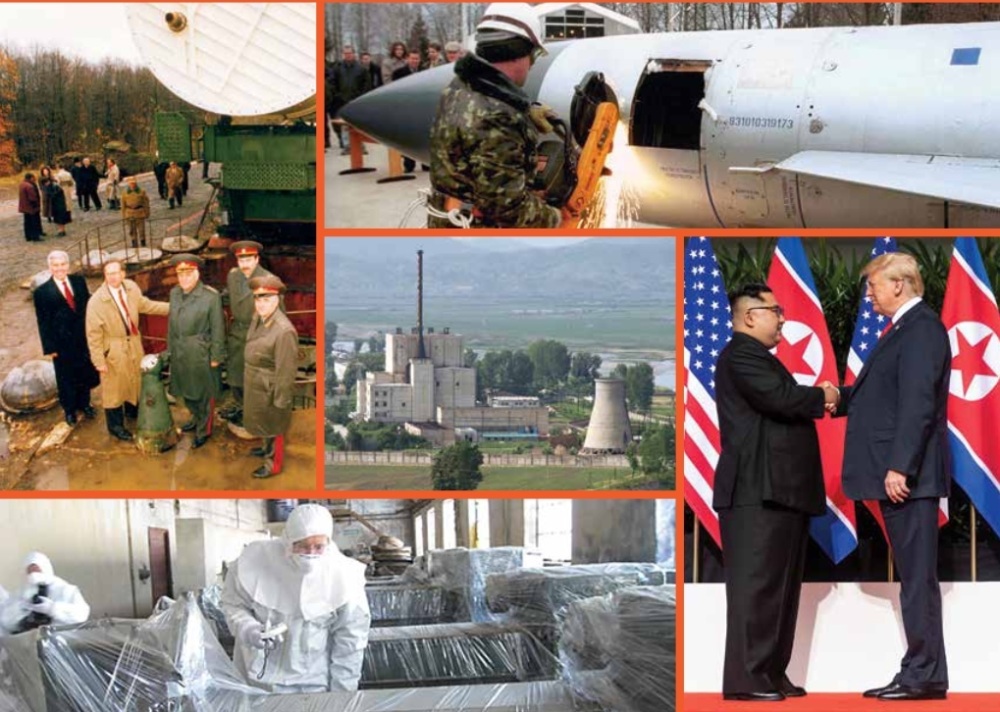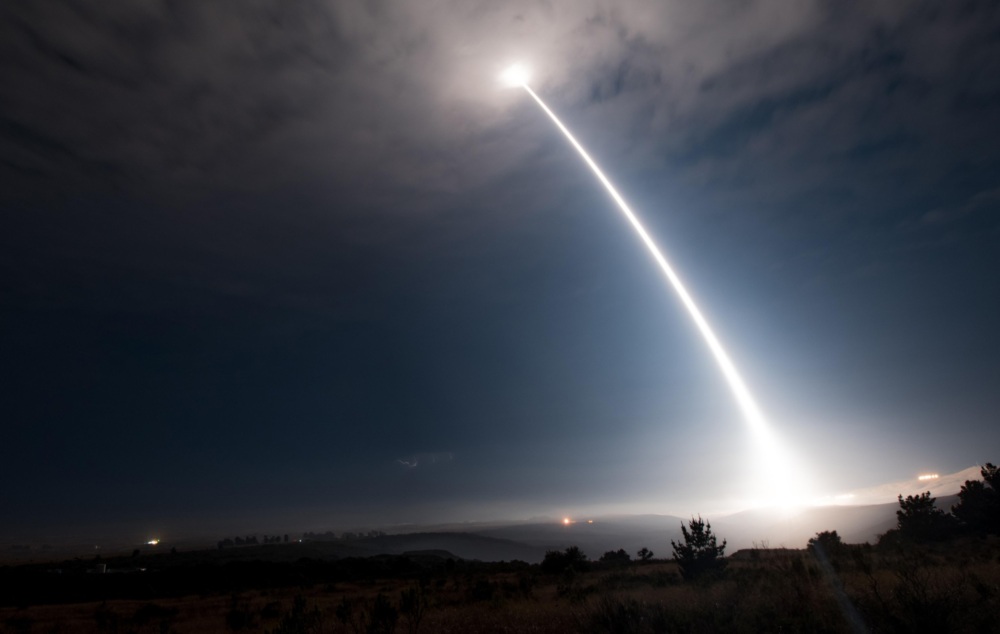Download full report here.
From the Foreword by Ernest J. Moniz and Sam Nunn
The Korean Peninsula is one of the most volatile and heavily militarized places in the world, carrying tremendous risk of conflict and the potential for catastrophic nuclear exchange. Tensions heightened between the United States and North Korea amid alarming loose talk about nuclear weapons in late 2017 and early 2018, but the 2018 Pyeongchang Winter Olympics, where North and South Korea symbolically entered the opening ceremony together under a “unification flag” and fielded a joint women’s hockey team, created a diplomatic opening. Intensified diplomatic contact between Republic of Korea President Moon Jae-in and Democratic People’s Republic of Korea (DPRK) Chairman Kim Jong Un ensued, leading to an offer by President Donald Trump to meet with Chairman Kim.
In the run up to that historic U.S.-DPRK leader summit in Singapore in June 2018, Nuclear Threat Initiative (NTI) Co-Chair and former Senator Sam Nunn joined NTI Board Member and former Senator Richard Lugar to pen an op-ed in The Washington Post. That piece called for creative diplomacy to capitalize on the emerging opportunity, recognizing that eliminating the nuclear threat and achieving stability and security on the Korean Peninsula would require unconventional thinking and steps that are much broader than denuclearization.
They recalled the vital lessons from the Nunn-Lugar Soviet Nuclear Threat Reduction Act of 1991, establishing the Cooperative Threat Reduction (CTR) program. The legislation facilitated technical and financial assistance to inventory, destroy, and dispose of nuclear and chemical weapons and their delivery vehicles in Russia, Belarus, Kazakhstan, and Ukraine and to dismantle biological production facilities following the breakup of the Soviet Union in 1991. The Nunn-Lugar CTR initiative also helped fund productive, peaceful scientific work for scientists who were employed in the weapons complex of the former Soviet Union, helping prevent the proliferation of their know-how to other states and non-state actors.
They wrote then—and we believe now—that this concept should be a critical component of any effort to verifiably dismantle North Korea’s nuclear weapons and related programs as well as to prevent future proliferation of weapons, material, or know-how. Such cooperation also can be used to engage thousands of North Korean scientists and engineers—who are now employed in making weapons of mass
destruction—in peaceful scientific and technical work.
Achieving security and stability and reducing catastrophic risks on the peninsula will require intensive, expert-level negotiations and comprehensive, step-by-step implementation over many months and years. This broader effort cannot be viewed solely as a bilateral U.S.-North Korean discussion. It also must include China, South Korea, Japan, and Russia and address the security and political concerns of all the parties,
including economic and humanitarian matters.
Economic, military, and diplomatic pressure helped bring the North Koreans to the table, but reaching a successful agreement will require carrots as well as sticks. Although there are significant differences between North Korea in 2019 and the former Soviet Union in 1991, the cooperative threat reduction concept could be a powerful tool—a carrot—to support the verifiable reduction and elimination of North Korea’s nuclear arsenal, its other weapons of mass destruction, and their delivery systems. Such a program could be developed, funded, and implemented jointly with our regional partners and other members of the international community. This report explores exactly that approach.
That a comprehensive and sustainable solution to the North Korean nuclear challenge has proven elusive for more than 25 years is a humbling fact that should not be ignored in crafting any policy recommendations for achieving denuclearization. The long history of mistrust and conflict between the United States and North Korea and of DPRK noncompliance will be difficult to overcome, but it should not deter policymakers from pursuing creative ways forward.
The incorporation of a cooperative threat reduction approach alone will not bridge the deep divide between the two sides but could serve as part of a broader and reinforcing set of mechanisms to begin to build trust and enhance security for all sides. Dick Lugar was an inspiration for and enthusiastic proponent of exploring the ideas in this report before he passed away in April 2019. We benefited greatly from his advice, counsel, and friendship, just as our country and, indeed, the world benefited immeasurably from his bold vision and determined leadership. We all owe him a debt of gratitude, which can be paid most meaningfully by working to advance the principles of peace and civility that he championed.
By examining some of the history and lessons of the CTR approach and how it might be applied to the DPRK today, we hope this report and the legacy of Dick Lugar inspire those who are charged with negotiating toward a new future for a peaceful and denuclearized Korean Peninsula.
Watch the video of the launch event
here.



